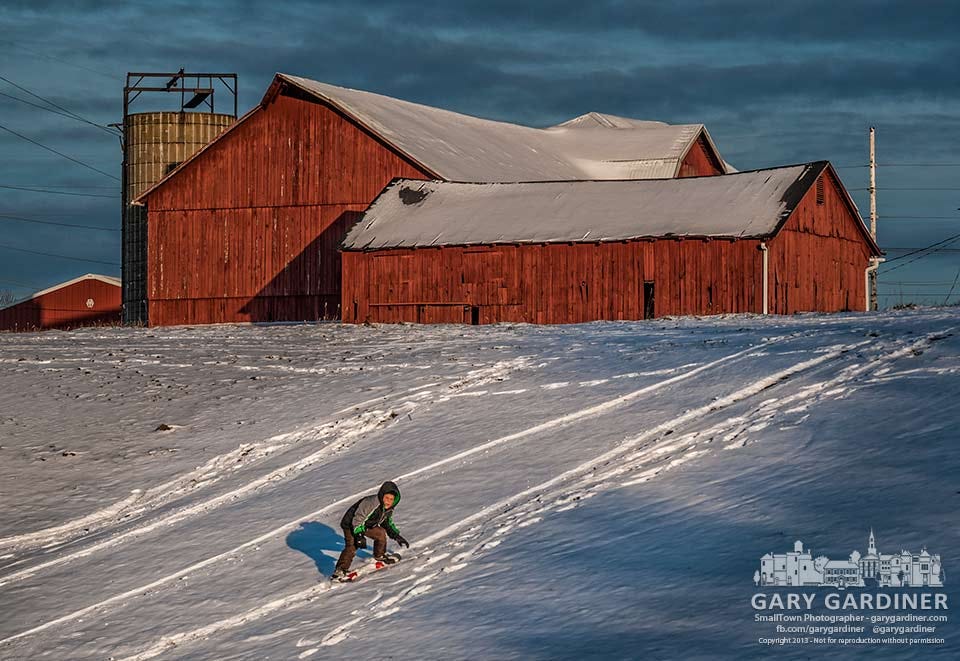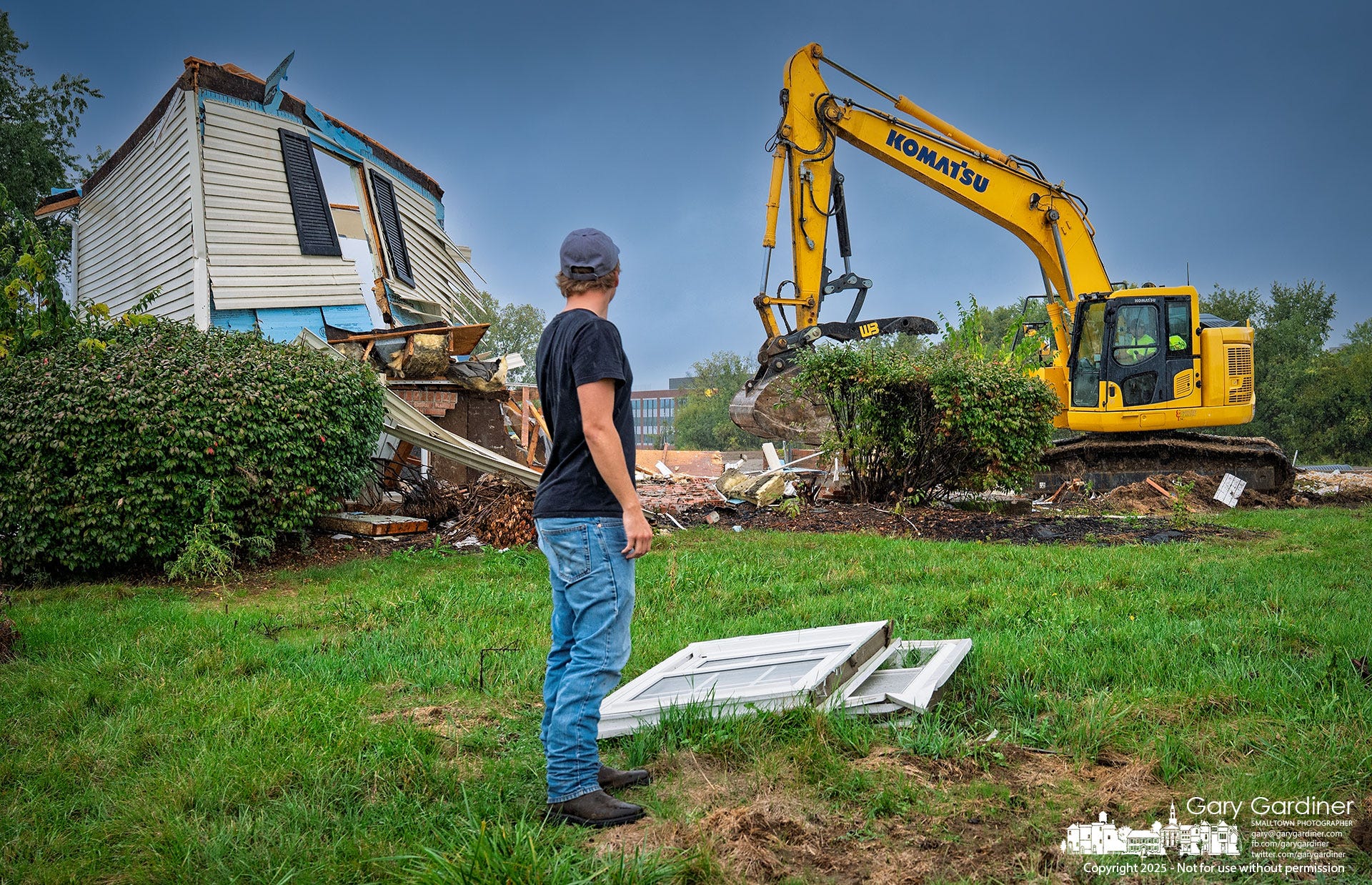There Is Always A Before Now

Twelve years ago, a kid named Giovanni Napoli snowboarded down a hill behind the Yarnell Farm, a landmark just on the edge of town. He was bundled up against the cold, leaning into the slope, the red barn glowing behind him in the late afternoon sun. It was the kind of photo you might enjoy but pass by without realizing how much it would come to mean later.
I am a retired photojournalist who once chased stories, working for wire services and newspapers. I have spent the last two decades since my retirement quietly documenting Westerville, chronicling its transformation from a quiet suburb to a rapidly developing business hub with growing pains.
I know the light, the people, the rhythms, showing up for small things, and sometimes, for the big ones too.
Twelve years after that snowy hill run, Gio stands still in the grass, watching an excavator claw through the walls of his childhood home. The house where he lived with his grandparents is being demolished as part of a large land acquisition by the city for business development. A two-lane connector road will soon run straight through the space that once held his bedroom.
The house sat adjacent to Yarnell Farm. The same barn is still there, at least for now, but the open space around it is shrinking by the year. These two photos of Gio, taken more than a decade apart, are stitched together not just by time, but by place, memory, and the photographer who keeps showing up.
The city has been changing. What was once farmland is being paved over, parceled out, and rezoned. Fields where kids played are now cul-de-sacs and warehouse parks. For those who’ve lived here long enough, it’s hard not to feel the pace of transformation, sometimes exciting, sometimes exhausting. The city is growing into something new. But what’s lost along the way doesn’t always make it into the official record.
That’s where being a long-term photographer comes in. Not chasing headlines, not on assignment. Just observing. Returning. Watching the light shift. Watching people grow up, move out, and come back. Watching buildings rise and fall. The photos aren’t always dramatic. But together, they tell a more profound truth than any single frame could.
Gio’s story, like so many others, is woven into this broader flow. A kid in the snow, a man in the grass. Not posing, not performing, just being. That kind of access doesn’t come from chance. It comes from trust. The kind of trust built when a photographer isn’t just passing through, but is part of the community itself.
In both moments, before and after, someone was there to see him. To bear witness. To make a photograph.
Photojournalism isn’t always about the front page. Often, it’s about the long game. It’s about noticing what changes, and what doesn’t. The quiet stories that add up to a larger truth. In a world moving faster each day, the strength of long-term documentation lies in its stillness. It asks us to slow down, to notice, to remember.
These photos of Giovanni are more than nostalgia. They are a reminder that the lives we live are not isolated events. They connect. They overlap. The bulldozers of another day may erase the snow tracks we carve one day. But the act of seeing, of documenting, can tie those moments together in a way that matters.
There is always a before. And with care, we can make sure there’s always someone to remember it.
My Final Photo News is a reader-supported publication. To receive new posts and support my photography and commentary, become a free or paid subscriber. Subscribe to The Westerville News and PhotoCamp Daily. My Final Photo News also recommends Civic Capacity and Into the Morning by Krista Steele.



Thank you for your work over all the years and thank you for the explanation that gives it all additional meaning